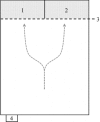Short-term grazing behavior of cattle under indoor housing for a new-bred tetraploid ruzigrass (Brachiaria ruziziensis Germain et Everard)
- PMID: 29059721
- PMCID: PMC5930286
- DOI: 10.5713/ajas.17.0543
Short-term grazing behavior of cattle under indoor housing for a new-bred tetraploid ruzigrass (Brachiaria ruziziensis Germain et Everard)
Erratum in
-
CORRIGENDUM (2018; vol 31, no 5, 748-754).Anim Biosci. 2021 Apr;34(4):783-785. doi: 10.5713/ajas.17.0543C. Epub 2021 Feb 22. Anim Biosci. 2021. PMID: 33705627 Free PMC article. No abstract available.
Abstract
Objective: The preference evaluation of cattle is an important factor for estimation and improvement of the grazing amounts of newly introduced or bred grasses or cultivars in barn. This study was performed to assess the grazing behavior (the amount of grazing and/or the grazing speed) of cattle as indirect method using newly bred Brachiaria ruziziensis tetraploid strain 'OKI-1'(BR) hay as treatment group and Cloris gayana 'Callide' (CG) hay as control group. It also compared the feasibility of using behavioral differences between two groups as one criteria for evaluating preference by Japanese black cattle in barn.
Methods: Three experiments were carried out using 12 growing Japanese Black cattle including 6 males and 6 females. In each experiment, the four Japanese Black cattle (2 males and 2 females) were placed in separated stall and allowed to graze BR and CG in manger that was separated into two portions for about 30 min. The position and behavior of the cattle were recorded, and weighed the residual of each gay at 15 and 30 minutes after experiment start.
Results: The BR was superior to CG in chemical composition such as protein, fibers and non-fibrous carbohydrate. The cattle, over all, tended to prefer BR over CG in the first half 15 minutes in terms of the time spent and amount of grazing. Additionally, growing cattle exhibited neophilia for BR bred newly.
Conclusion: These findings indicated the current approach could be applied for one of criteria to evaluate the preference of hay by Japanese black cattle under indoor housing environment.
Keywords: Brachiaria ruziziensis; Chloris gayana; Grazing Behavior; Indoor Housing; Japanese Black Cattle; Preference.
Conflict of interest statement
We certify that there is no conflict of interest with any financial organization regarding the material discussed in the manuscript.
Figures




References
-
- Hanagasaki K, Mochizuki T, Morikawa N, Nagatoshi M, Toma T. Investigation for selection new tropical forage cultivars adapted with Okinawa. (1) Comparison of digestible dry matter yield and crude protein content. Annual Report Okinawa Prefectural Livestock and Grassland Research Center (in Japanese) 2008;44:79–84.
-
- Valle CB, Savidan YH. Genetics, cytogenetics and reproductive biology of Brachiaria. In: Miles JW, Maass BL, Valle CB, editors. Brachiaria; Biology, Agronomy and Improvement. Cali, Colombia: CIAT; 1996. pp. 147–63.
-
- Ishigaki G, Gondo T, Suenaga K, Akashi R. Induction of tetraploid ruzigrass (Brachiaria ruziziensis) plants by colchicines treatment of in vitro multiple-shoot clumps and seedlings. Grassl Sci. 2009;55:164–70.
-
- Kouki K, Ishigaki G, Akashi R, Shimabukuro H. The newly-bred cultivar production in Brachiaria grass. (1) Production of the high seed yield strains using sexual tetraploid ruzigrass ‘Miyaokikoku-ichigou’. Annual Report Okinawa Prefectural Livestock and Grassland Research Center (in Japanese) 2014;52:73–5.
-
- Fukagawa S, Hori M, Iwanaga T, Sakita S, Ishii Y. Relationship between palatability and feed compositions of first-cut hay in tropical grasses. West Japan J Anim Sci. 2003;46:39–45.
LinkOut - more resources
Full Text Sources
Other Literature Sources

